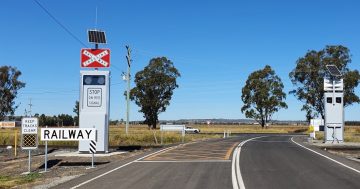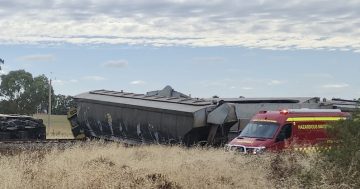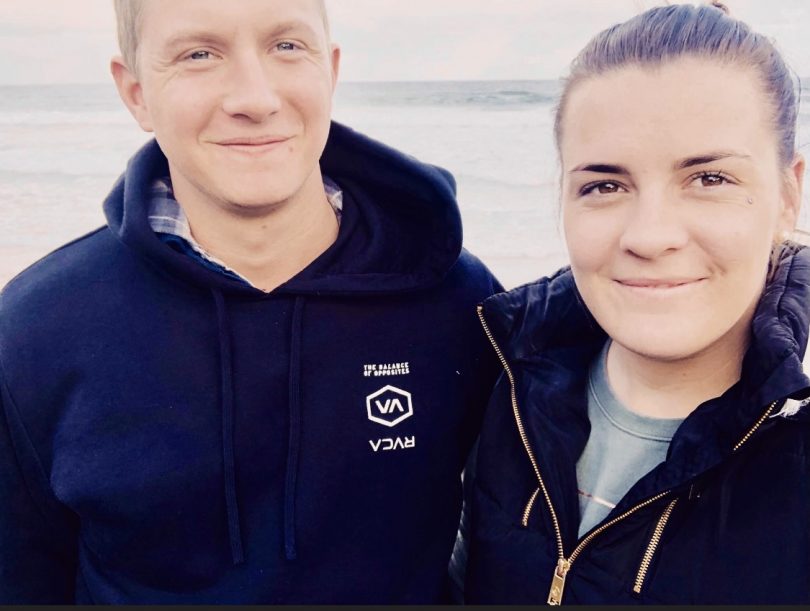
Ethan Hunter and Maddie Bott. The pair were to marry last weekend but Ethan was killed in a level crossing accident near Bribbaree in March. Photo: Maddie Bott.
Maddie Bott and Ethan Hunter were set to marry in Easter.
This was their plan B wedding, having been forced to cancel their dream October 3, 2020 nuptials in Fiji due to COVID-19.
Now there won’t be a wedding. Instead Maddy was forced to share her vows at Ethan’s funeral in Grenfell on 8 March.
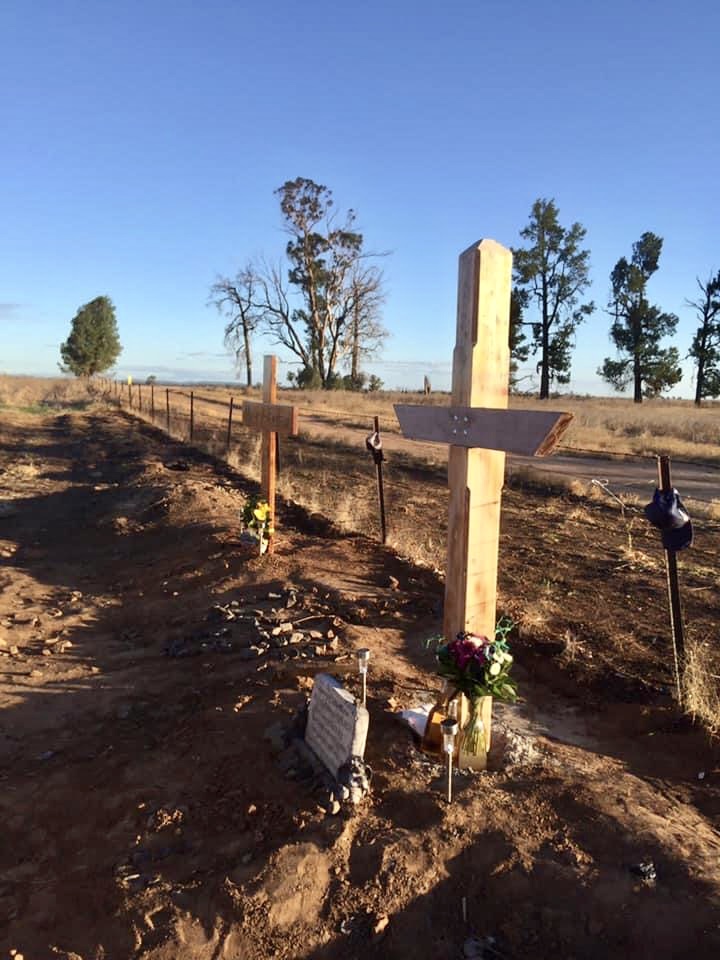
The men were transporting gypsum on a farm near Bribbaree when the B-Double they were driving collided with a freight train at a level crossing. Photo: Maddie Bott.
It was a one-off trip transporting gypsum that found Ethan, 27, in the cab of a B-Double truck with work colleague Mark Fenton, 50, when they were struck by a train at a level crossing on a private road near Bribbaree, west of Young in the NSW South West Slopes.
Both men were killed instantly. It was a gut-punching crash that distressed the small communities in the west, not just because of the loss of life, but the fact it could have happened to anyone out there.
Out near Bribbaree where tracks and freight trains frequently pass through villages and farming properties as part of the 576 kilometre Stockinbingal to Parkes rail line – a major cross-country link between the Main South and Main Western Lines – signs are the only warning measure in place.
The accident occurred almost 12 months to the day a semi-trailer and train collided northeast of Bribbaree on Mary Gilmore Way, a state highway. The semi driver survived but the emotional and physical toll has been immense.
Along with the scores of stories Maddie has been told of close calls, accidents and fatalities on level crossings, in the weeks since Ethan’s death her own investigations have revealed that safety and level rail crossings do not necessarily work hand in hand.
And this is what she wants to change.
She’s started an online petition through change.org calling for flashing lights to be made mandatory at all level crossings in Australia.
She’s coined the phrase “One Track at a Time” to reinforce her message.
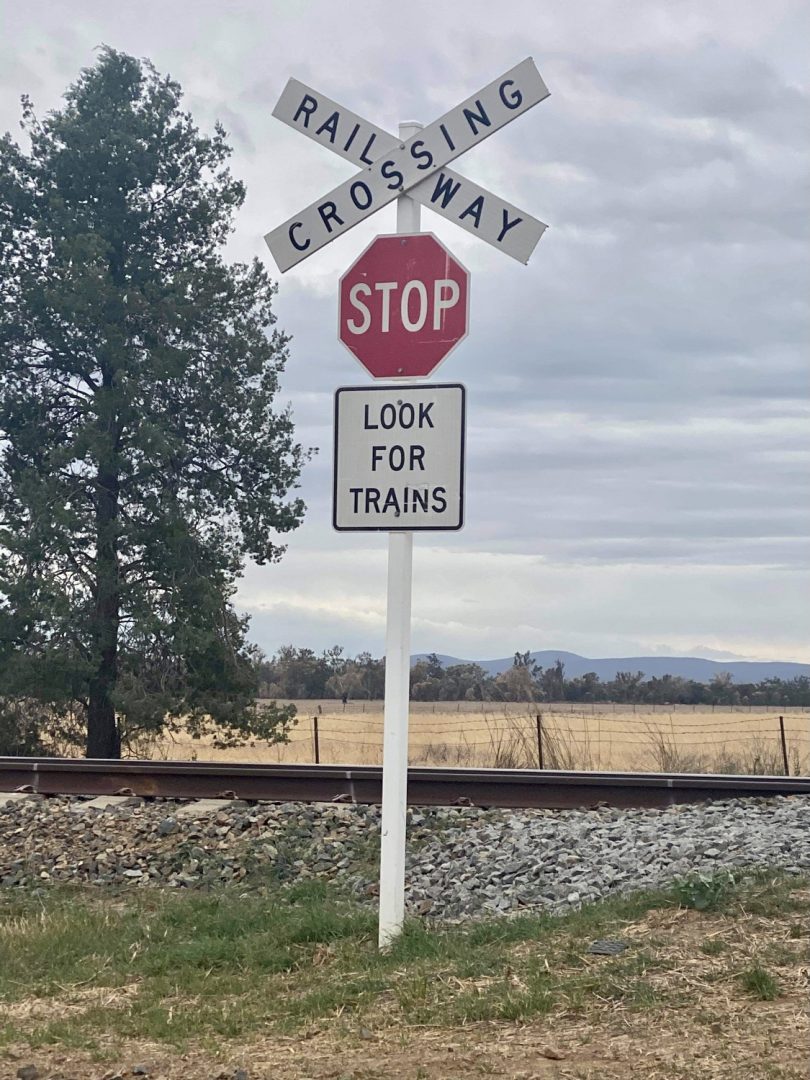
Signage at the level crossing where father-of-three Mark Fenton and Ethan Hunter were killed in March. Maddie Bott is campaigning to have the passive signage at all level crossings throughout Australia to become active. Photo: Maddie Bott.
“I know that neither Ethan or Mark would take any risks, they just weren’t those sort of people,” Maddie said.
“I know that Mark was all about safety at these crossings and who knows what happened – that’s for the police to determine – but the signage definitely has to be better, as does the line of sight”.
According to the Australian Rail Track Corporation (ARTC), of the 23,500 level crossings in Australia, about 21 per cent (4935) are active, which means they have boom gates/and or flashing lights.
The remaining 79 per cent (18,565) are passive, which means they are signed with Stop or Give Way signs. This is the type of crossing where Ethan and Mark died.
With more than 100 near hits and almost 30 fatalities at level crossings nationally every year, Maddie is petitioning – at a minimum – for lights to be made mandatory.
“In rural areas we need to bridge this gap in transport and start fighting for our right to be safe at all level crossings,” she said.
“I will never be able to bring Ethan back, but I can fight to make sure I do all I can to prevent anyone else going through the pain I feel,” she said.
“This is for you Ethan Hunter and Mark Fenton – I promise we are going to fight for you,” Maddie added.
In just four days, which takes us to 11am Thursday morning, she’s amassed nearly 7300 signatures and the total is ticking over by the second.
ARTC have expressed their sincere condolences to the families, friends and work colleagues of Ethan and Mark.
They said running a safe railway was their highest priority.
“We work in partnership with various authorities to raise awareness of safety at road and rail interfaces – particularly passive level crossings in rural areas,” the spokesperson said.
“Our understanding is that the level crossing at the site of the Bribbaree accident was compliant with visibility regulations”.
“ARTC works alongside state and local agencies to identify level crossings that require upgrades,” they added.
“These locations are identified through a risk-based, prioritised ranking approach using the Australian Level Crossing Assessment Model, a review of safety incident data and consultation with road and rail infrastructure managers.”
The spokesperson said ARTC’s vegetation maintenance program utilises professional contractors who assess, review and perform vegetation control on our behalf.
ARTC have also issued assurances there will be no new brownfield level crossings on the Inland Rail route.
Original Article published by Edwina Mason on About Regional.












